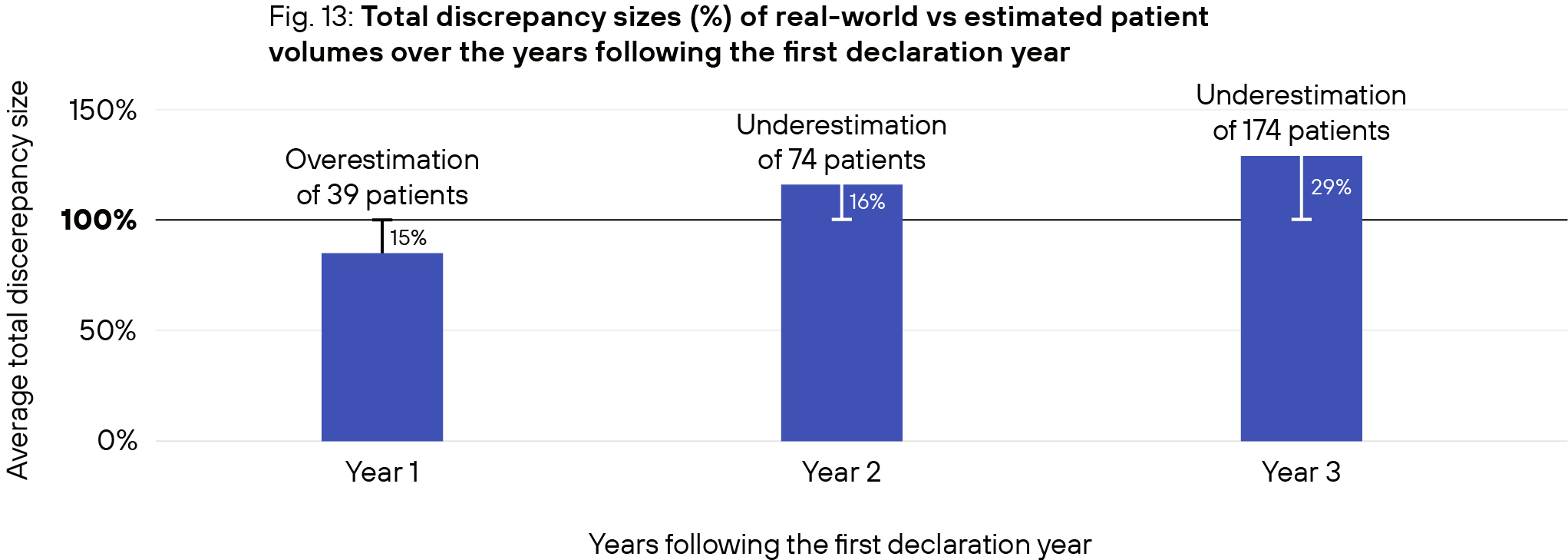Report: ‘On the Horizon’ – Actionable insights into innovative medicines and their costs
The purpose of the ‘On the Horizon’ report
In early December 2022, the National Health Care Institute (NHCI) released the 11th update of the Horizonscan medicines database. Since 2018, Horizonscan has provided a publicly accessible overview of medicines expected to enter the Dutch market within the next two years. This database includes information on new proprietary medicines, indication extensions of existing medicines, generics, and biosimilars, including their mechanism of action, expected patient volume, treatment value, registration date, and budget impact.
Actionable insights, better connected
The LOGEX Life Science team analysed the datasets of all past Horizonscan publications and shared their actionable insights in the On the Horizon report, which can be downloaded on this page. It covers topics such as the number of new medicines per disease domain, the annual per-hospital budget impact of the most expensive upcoming medicines, and the mapping of pharmaceutical interest in specific disease areas, such as infectious diseases before and after the outbreak of COVID-19. Additionally, real-world insights into the discrepancy between the expected annual patient volumes and those seen in clinical practice will be shared. For this, the claims database of LOGEX’ Actionable Real World Evidence Network (ARWEN) is used. The implications of these discrepancies will be discussed too.

The pharmaceutical industry is constantly evolving, making it challenging to stay updated on new medicines entering the market. The On the Horizon report aids healthcare stakeholders in navigating this complexity by providing an overview of new medicines and their expected budget impact, along with patient volumes in the real world.
Jan van der Eijk, Principle of Life Science
Key insights
- Most new medicines are expected in the fields of oncology, hematology and neurology
- (Neuro)muscular diseases such as Duchenne, as well as certain cancers like non-Hodgkin’s lymphoma, are rapidly gaining interest from the pharmaceutical industry
- The number of medicines in clinical trials is growing for the first time since the COVID outbreak
- The COVID outbreak initially led to a spike in projected drug development for infectious diseases, but it now appears to be returning to pre-COVID levels.
- Lung cancer medicines will have the biggest impact on hospital budgets due to both high-cost drugs being administered already and new expensive treatments coming up.
Assessing the accuracy of Horizonscan patient volume predictions using real-world data

As a closing chapter, the role of real-world data in assessing the accuracy of patient volume predictions is highlighted. For 16 high-cost medicines, the expected patient volumes by the NHCI were compared with real-world patient volumes starting from the year of their first declaration. We found that in the third year after the first declaration year, the average real-world patient volumes of medicines were underestimated by 29% (see figure).
Since the expected total healthcare costs for each medication are directly related to the patient volumes predicted in the Horizonscan, an average patient volume underestimation of 29% could have significant consequences for the planning, budgeting, and access to medications for various stakeholders in the healthcare industry, as described thoroughly in the report. It is important to continue tracking the uptake of new medications in the real world and to identify ways to improve the accuracy of patient volume predictions.
‘On the Horizon’ report
Discover how Real-World Data can be used to monitor the impact of innovative medicines and how these insights can improve patient treatments.
On the Horizon report
Please fill in the form below to download the report.

